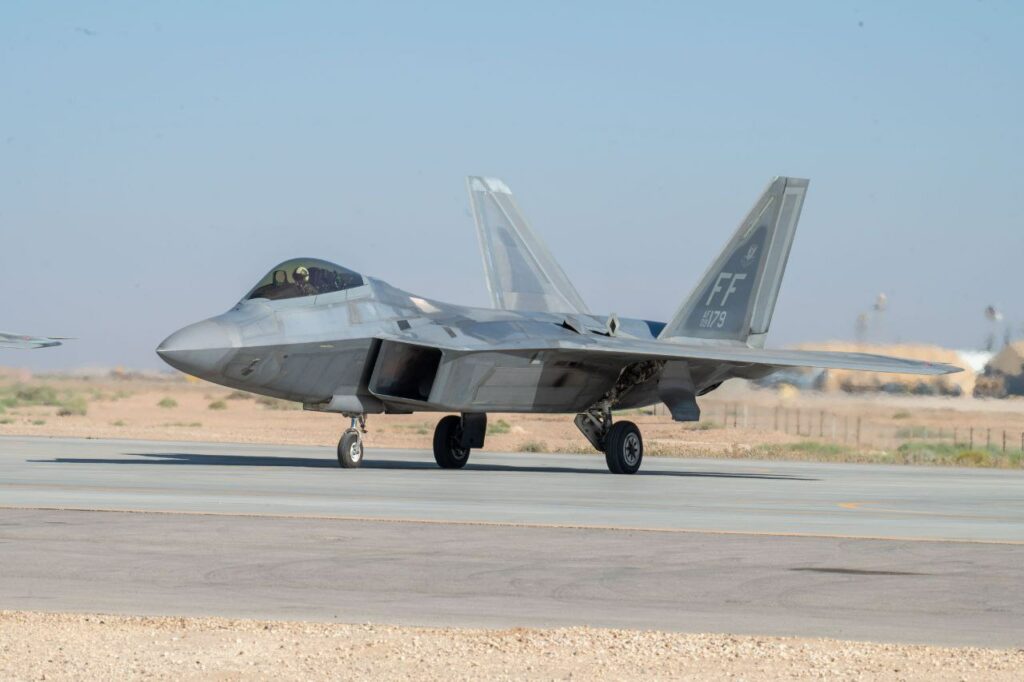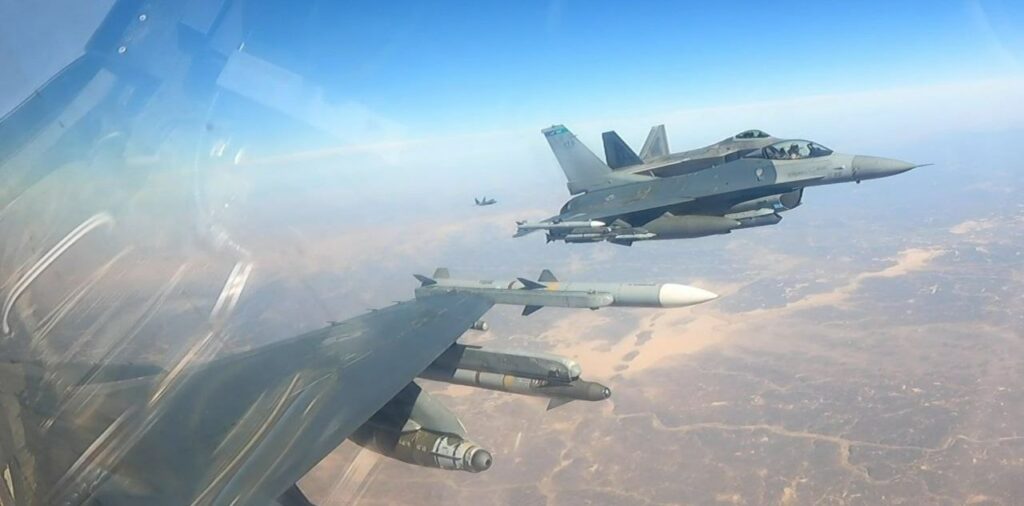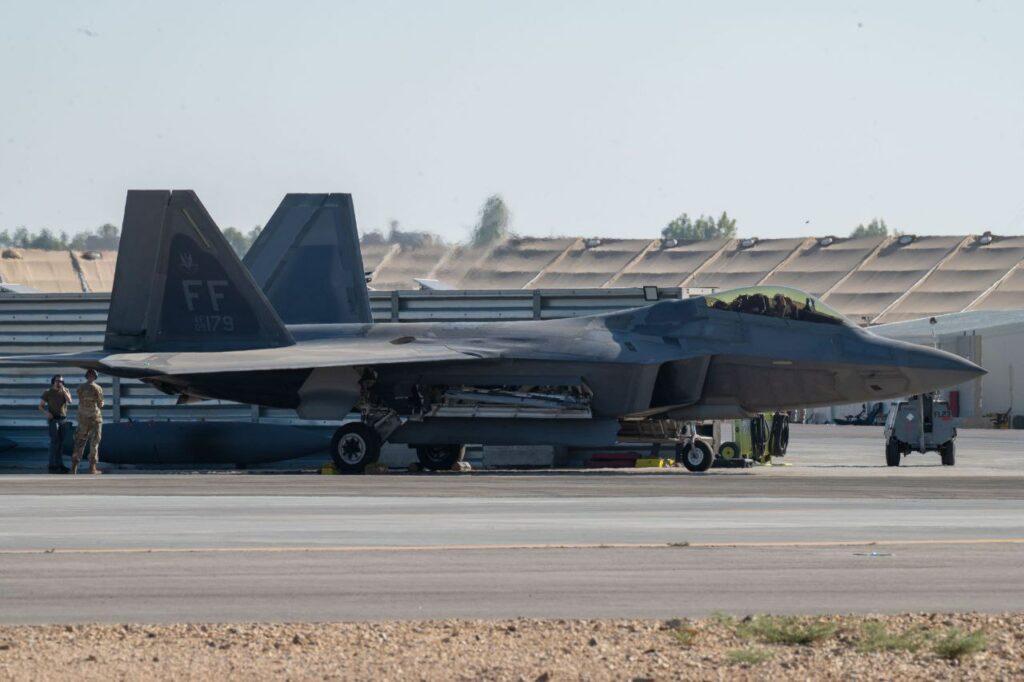A series of recent steps by the United States Central Command (CENTCOM), which is responsible for the Middle East, to beef up regional American air assets, can be interpreted as being designed to deter Russia just as much as they are designed to deter Iran.
This is due to a growing list of incidents between the United States and Russia in Syrian skies, which is emerging as a new potential global flashpoint between the two global power adversaries, as conflicts and tensions between European and Middle Eastern arenas become increasingly integrated, with implications for Israel.
In July, US Air Forces Central and the Pentagon announced that F-35s would be deploying to CENTCOM (to Al-Udeid Airbase, Qatar).
The jets were deployed at the same time that the US sent a destroyer and an amphibious assault ship to the Persian Gulf, with US Marines on board, in response to an uptick in Iranian attempts to seize or disrupt oil tankers in the area.
But the F-35s are just as relevant to what is taking place in Syria, where, also in July, a Russian Su-35 unleashed flares that damaged the blades of an American MQ-9 unmanned aerial vehicle – the latest episode of such clashes.

In March, a Russian fighter jet (Su-27) caused an American MQ-9 to crash into the Black Sea – illustrating just how these incidents are part of a global trend.

Also in July, another Russian fighter jet damaged an American UAV with flares. That same month, according to international media reports, one of the Russian jets stationed at Khmeimim Air Base, flew very close to an American turboprop MC-12 intelligence-gathering aircraft, in an incident that posed an immediate safety risk to on-board air-crews, AFCENT Commander Lt. Gen. Alexus Grynkewich stated.
Earlier in July, a Russian surveillance aircraft, an An-30, flew over the US’s Al-Tanf base in eastern Syria for an extended period, and the US found itself without a fighter jet presence to defend the base – a development it found d alarming, and which can certainly help explain why F-35s are now in Qatar.
The US has sent a squadron of F-35s, which join two F-16 squadrons and one A-10 squadron under CENTCOM command. In June, CENTCOM received F-22 Raptors.



On June 14, when it announced the arrival of the Raptors, CENTCOM also released scathing criticism of Russian behavior, condemning what it said was “increasingly unsafe and unprofessional behavior by Russian aircraft in the region.”
Earlier this year, Grynkewich warned that as the Russian Air Force relies on Iranian suicide drones in Ukraine, Moscow is compelled to act in Iran’s interests, a development that has “resulted in collusion, if you will, between the Russians and Iranians, both of whom want to see us out of Syria.”
The US maintains around 900 soldiers in Syria, where it works with Kurdish partners to combat ISIS, and requires air-based intelligence, surveillance, reconnaissance, and firepower capabilities.
Russian forces in Syria began harassing US drones over Syria back in November 2022, when a Russian surface-to-air missile was fired at an American Reaper drone.
On July 25, a Pentagon official told reporters that the US does not seek escalation or war with Russia, but added that there is “no excuse for Russian forces’ continual harassment of our MQ-9s, especially after years of operating within the region and after years of also being very clear on what our goals are, which is the enduring defeat of ISIS.”
Earlier this year, the US deployed F-16s to the region, to patrol the Strait of Hormuz and deal with Iranian aggression, and while those patrols can be joined by the F-35s, the stealth aircraft can just as easily find themselves called out to Syria.
So far, these developments have not visibly affected Israel’s own deconfliction arrangement with Russia over Syria. This arrangement has been vital in enabling Israel to pursue its long-term campaign to strike Iran’s entrenchment effort in Syria.
Israel has reportedly dropped thousands of munitions as part of this campaign, targeting weapons transfer attempts, missile production and storage bases, and other dangerous activity by Iran on Syrian soil. Russia has stayed out of this shadow war.
However, Russia’s conduct in Syria does indeed appear to reflect a changing strategic logic by Moscow, one that is intended to please its Iranian ally in Syria, as Russia grows increasingly dependent on Iranian UAVs for its firepower needs against Ukraine.
Iran is now established as the leading firepower supplier to Russia, supplying its Shahed 131, Shahed 136 and Mohajer 6 UAVs to Ukraine. The Ukrainians, for their part, are using a combination of Western-supplied air defense systems to intercept them.
In August, Russia began an effort to manufacture thousands of Iranian-designed attack drones on its own soil, representing a further tightening of Russian – Iranian military-strategic relations.
It is very possible that these developments will, sooner or later, affect Russia’s ability to deconflict with Israel.
Russia will likely come under growing pressure from Iran to challenge Israel’s extensive air operations over Syria, and the more dependent Moscow is on Tehran, the harder it will find it to say ‘no’ to the Iranians.
As such, it is imperative for Israel and the US to conduct detailed contingency planning for the scenario of a joint Iranian – Russian challenge to both Israeli and American air force activities in the region.
It is no longer possible to assume that geostrategic tensions can be compartmentalized to regions, and linkages between Middle Eastern and European conflicts are becoming increasingly intertwined.






